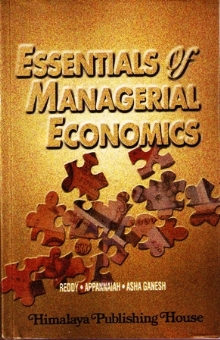Economics is essentially the applied economic science pertaining to business decision-making. A working knowledge of economic tools of analysis is very useful to a modern businessman in his decision-making process. The study of economics through the globe by different strata of people is clear indication of its importance.
It is thus a welcome trend, in recent years, in the Indian Universities to introduce a course in Economics As per NEP 2020 Syllabus of the curricula of Commerce Faculties at Undergraduate Level.
The Government of Odisha, is making big strides in bringing quality change in the education sector in order to achieve greater employability to the younger generations. In this direction one step is reforms in the higher education system. The present book “Economics” is lucidly written, without compromising the standard designed in treatment of the subject, to cater to the needs of the student community.
Encouraged by the overwhelming response to our earlier publications on “Business Economics”, across the country which ran into several editions, we are now presenting a thoroughly prepared new volume entitled “Economics” as per the syllabus prescribed. It is primarily meant to serve as a standard, comprehensive and complete textbook for the latest Commerce and Management Programmes prescribed for all Odisha Universities.
The book provides a thorough treatment of all the topics to be covered in the syllabus, giving them a logical flow with a lucid explanation of the subject-matter in an integrated manner with numerical, graphical and practical illustrations.
Contents –
UNIT – I: Demand, Supply and Consumer Behaviour
1: Demand – Law of Demand – Changes in Demand & Quantity Demanded
2: Supply – Law of Supply – Change in Supply – Market Equilibrium
3: Elasticity of Demand and Elasticity of Supply
4: Concept of Utility – Measurement of Utility (LDMU & EMU)
5: Indifference Curve Analysis
6: Income and Substitution Effects – Price Consumption Curve (PCC), Income Consumption Curve (ICC) – Engel Curve
UNIT II: Production Function, Cost and Market Structure
7: Derivation of Production Function-Law of Variable Proportions
8: Isoquants-Producer’s Equilibrium-Returns to Scale
9: Costs – Short-Run and Long-Run –Different Forms of Market
10: Perfect Competition-Equilibrium of Firm and Industry
11: Monopoly – Short-Run & Long-Run Equilibrium – Allocative Inefficiency & Dead Weight Loss
12: Monopolistic Competition- Short-Run & Long-Run Equilibrium – Oligopoly – Kinked Demand Curve
UNIT III: National Income Accounting
13: Macro Economic Variables National Income – Concepts – Measurement
14: Circular Flow of Income and Expenditure in Closed and Open Economies
UNIT IV: National Income Equilibrium & Macro Economic Problems
15: Consumption Function – APC & MPC- Concept of Investment – Investment Multiplier
16: Business Cycles – Phases of Business Cycles
17: RBI & Monetary Policy
18: Inflation, Interest Rate, Foreign Exchange Rate & Balance of Payments








Your review is awaiting approval
Howdy! Do you know if they make any plugins to help with Search Engine Optimization? I’m trying to get my
blog to rank for some targeted keywords but I’m not seeing very good results.
If you know of any please share. Cheers! You can read similar art here: Blankets